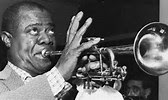After taking in Lawrence's series, I crossed the threshold to a small room featuring music from Harlem in the 1930's. Louis Amstrong's "(What Did I Do to Be So) Black and Blue" was playing, and I realized how easy it is to listen to music without really hearing the lyrics or thinking about their meaning. Here's a sample from "Black and Blue":
I'm hurt inside, but that don't help my case
Cause I can't hide what is on my face
How will it end? Ain't got a friend
My only sin is in my skin
What did I do to be so black and blue?
MOMA has thoughtfully provided a cushioned bench where you can sit and take in the musical selections. Other songs include Fats Waller performing "African Ripples," Bessie Smith with "Gimme a Pigfoot" and Joshua White with "Jim Crow Train." For the complete Great Migration playlist, click here.
For a tie-in with the literary arts, MOMA commissioned ten contemporary poets to write poems in response to Lawrence's Migration Series. (I love our local Art Poems collaboration between artists and poets, so I was all over this aspect of the show.)
 |
| Panel 10 |
SAY GRACE by Rita Dove
Got a spoon
Got a pan
Got a bucket for the scraps
Got a nail to hang our things on
A wish
An empty sack
Dear Lord bless our little bit
This table
Our beds
Dear Lord who made us
And the world
Now can we raise our heads
The website includes audio links to the poets reading their works, which adds yet another dimension. To read more of the Migration Series Poetry Suite, click here.
Got a pan
Got a bucket for the scraps
Got a nail to hang our things on
A wish
An empty sack
Dear Lord bless our little bit
This table
Our beds
Dear Lord who made us
And the world
Now can we raise our heads
The website includes audio links to the poets reading their works, which adds yet another dimension. To read more of the Migration Series Poetry Suite, click here.
 |
| Panel 3 |
 |
| Panel 45 |
If you want to really delve into the subject of the Great Migration, the "Perspectives" tab of the website contains video interviews with artists, historians, curators and filmmakers about the themes developed in Lawrence's work. I listened to an interview with Chef Marcus Samuelsson who, among other things, owns the Red Rooster restaurant in Harlem. Samuelsson talked about migrants bringing food with them on their journey north because they were prohibited from eating in the dining cars and the ways the migrants' eating habits had to change when they moved to an urban environment. (I was interested in his comment that Southern traditions are making a resurgence today with the farm-to-table movement.) He also relayed the tradition of "rent parties." If someone was having difficulty paying his rent, he might invite people over for some food and entertainment. In exchange, the guests would pitch in money for that month's rent. Food was then, as it is now, a cornerstone of community.
While it's well worth making a trip to MOMA to see this exhibit, the Museum has made it possible for everyone to contemplate Lawrence's Migration Series and its context in American history. And for people like me who have seen the show, the website provides an opportunity to deepen the experience. Kudos to the Museum for taking advantage of today's technology in this way.
"One Way Ticket" runs through September 7th.




No comments:
Post a Comment